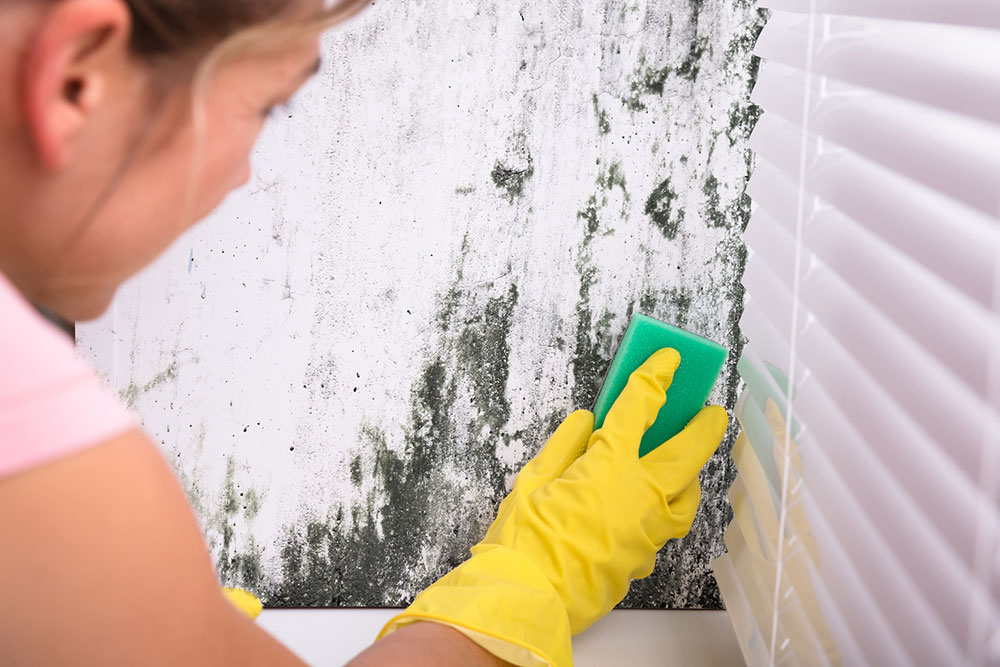10 household factors likely to trigger lung problems

Managing a household involves a host of activities and responsibilities, from cooking and cleaning to taking care of finances and maintaining the home. Another essential aspect of ensuring a safe and healthy household is to identify specific factors that can affect one’s health. Certain seemingly harmless factors may potentially trigger or aggravate lung diseases like chronic obstructive pulmonary disease (COPD) and asthma. So, here are 11 household factors to note that may trigger lung problems.
Mold
This type of fungus releases tiny particles called spores in the air, which can cause lung infections, particularly among individuals with mold allergies. It can also worsen COPD and weaken one’s immune system, making one vulnerable to other health problems. Therefore, it is important to promptly fix leaks, prevent the development of moisture, and ensure that cut grass clumps do not form in one’s lawn.
Flour
Although an indispensable ingredient in baking, flour is classified as a hazardous substance for the lungs and often leads to coughing and wheezing among bakers. For example, flour dust typically causes occupational asthma and allergic rhinitis. In fact, one of the most common types of occupational asthma is one caused by exposure to cereal flour. This type of asthma is called baker’s asthma. Hence, one should cover one’s nose and mouth while using flour in the kitchen to prevent inhaling the minute flour particles.
Paraffin candles
Petroleum-based paraffin candles are one of the common household factors that contribute to lung damage. These candles release chemicals into the air that may lead to allergic reactions causing breathing issues such as asthma. A study also suggests that paraffin candles release toxic chemicals such as benzene and toluene, which are known to be cancer-causing agents. A great substitute of petroleum-based candles are beeswax or soy candles that not only burn safe but also burn longer.
Radon
Radon is among the most common causes of lung cancer nationwide. Made by the breaking down of soil, rocks, and water, this chemical seeps into buildings through crevices in floors and walls and around electrical and plumbing wires. Radon contains radioactive particles that damage the lungs when these are inhaled or ingested. Typically, houses are tested for the presence of radon before homeowners move into them. However, it is a good practice to buy a kit to test its presence in one’s home in case of unexplained lung problems.
Birds
Bird feathers and droppings may cause lung inflammation and scar lung tissues, a condition commonly referred to as breeder’s disease or bird fancier’s lung. The technical term for this condition is hypersensitivity pneumonitis. Hence, it is important to avoid direct contact with bird droppings and feathers and consult a doctor promptly in case of any such symptoms after being around birds.
Indoor air pollution
Poor indoor air quality is one of the significant contributors to lung damage. Some of the common causes of indoor air pollutants are cooking fumes, harmful chemicals released from household paints and sprays, and pet dander. Continuous exposure to these indoor pollutants can irritate the respiratory system and may also cause lung damage over a period of time. These may also lead to severe lung conditions such as asthma and chronic bronchitis. It is best to switch to eco-friendly cleaning products and have proper ventilation to improve indoor air quality.
Exposure to solid fuel
Some households make use of solid fuels like charcoal, peat, wood pellets, and firewood for sustenance. However, repeated exposure to these solid fuels has been found to significantly increase one’s risk of lung diseases like COPD, pneumonia, and lung cancer, with women being more at risk of such health conditions. It is advisable for homeowners to switch to other forms of intangible fuel that do not require direct exposure to the fuel source.
Exposure to indoor asbestos fibers
These naturally occurring fibrous materials are used in the manufacture of several household items, including fireproofing and wallboard materials. Repeated exposure to asbestos fibers is known to scar and irritate the lung tissue, causing lung stiffness, difficulty breathing, and even lung cancer. Thus, homeowners should ensure that asbestos fibers are not used in household products as much as possible. Healthier alternatives include straw, hemp, sheep’s wool, and cellulose.
Presence of pets in the home
Pets can be one’s best companions during times of joy and sorrow. Unfortunately, the presence of pets in one’s home can cause certain health problems, including lung diseases. For example, those suffering from pet allergy may develop hay fever symptoms, such as shortness of breath and a runny nose. Moreover, manually handling pet dander can aggravate asthma issues. While, for some, the advantages of having pets outweigh these consequences, it is important to be aware of such hazards and follow certain healthcare measures to prevent potential lung problems.
Home-cleaning activities
Home cleaning is essential to ensure cleanliness and hygiene and prevent infections. However, the use of certain cleaning products may trigger or aggravate lung and respiratory issues. Some such potentially hazardous chemicals include bleach, ethylene glycol butyl, and certain disinfectants. It is best to switch to natural, DIY cleaning solutions like vinegar and baking soda solutions and avoid buying cleaning products containing such harmful chemicals.
Although prevention is better than cure, one may not always even be aware of exposure to chemicals in the household. Hence, one should consult a pulmonologist at the earliest if one experiences coughing, wheezing, and shortness of breath, which do not subside within a few days.

